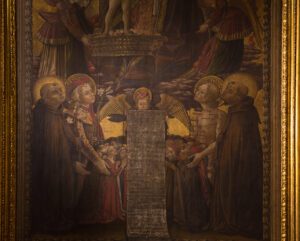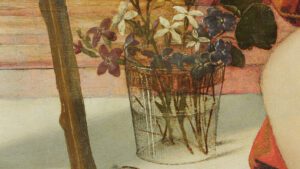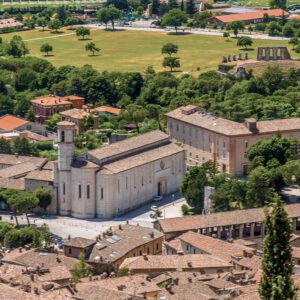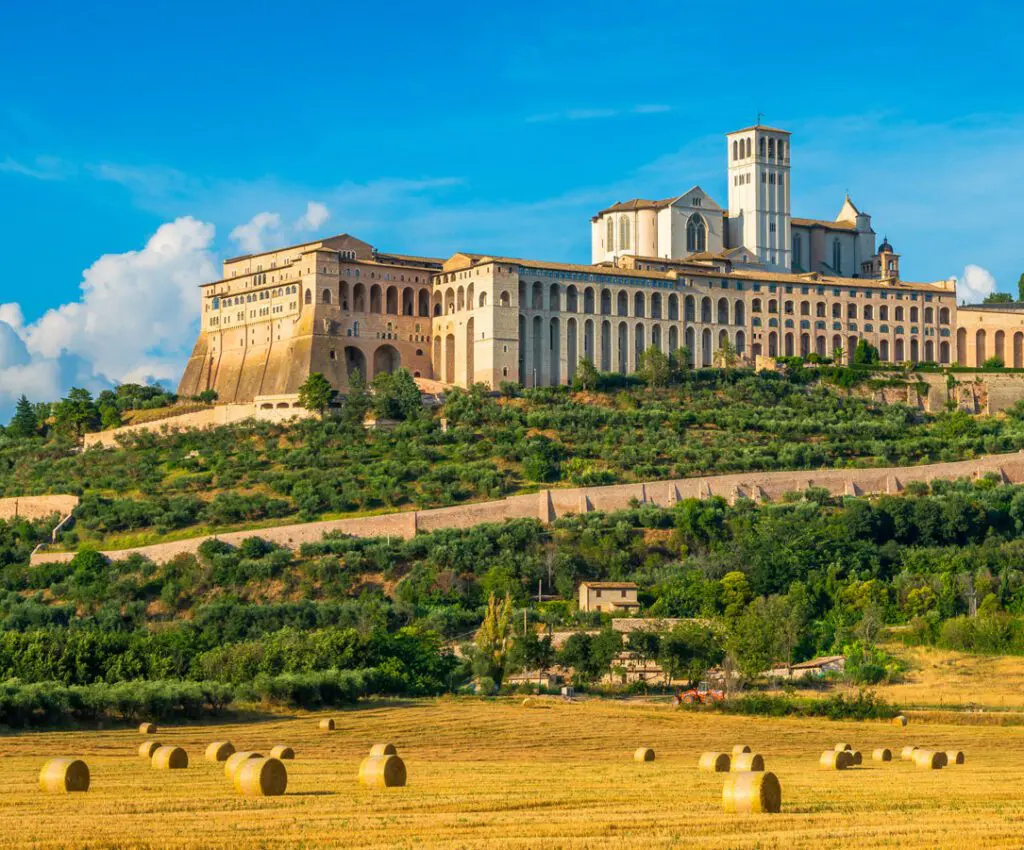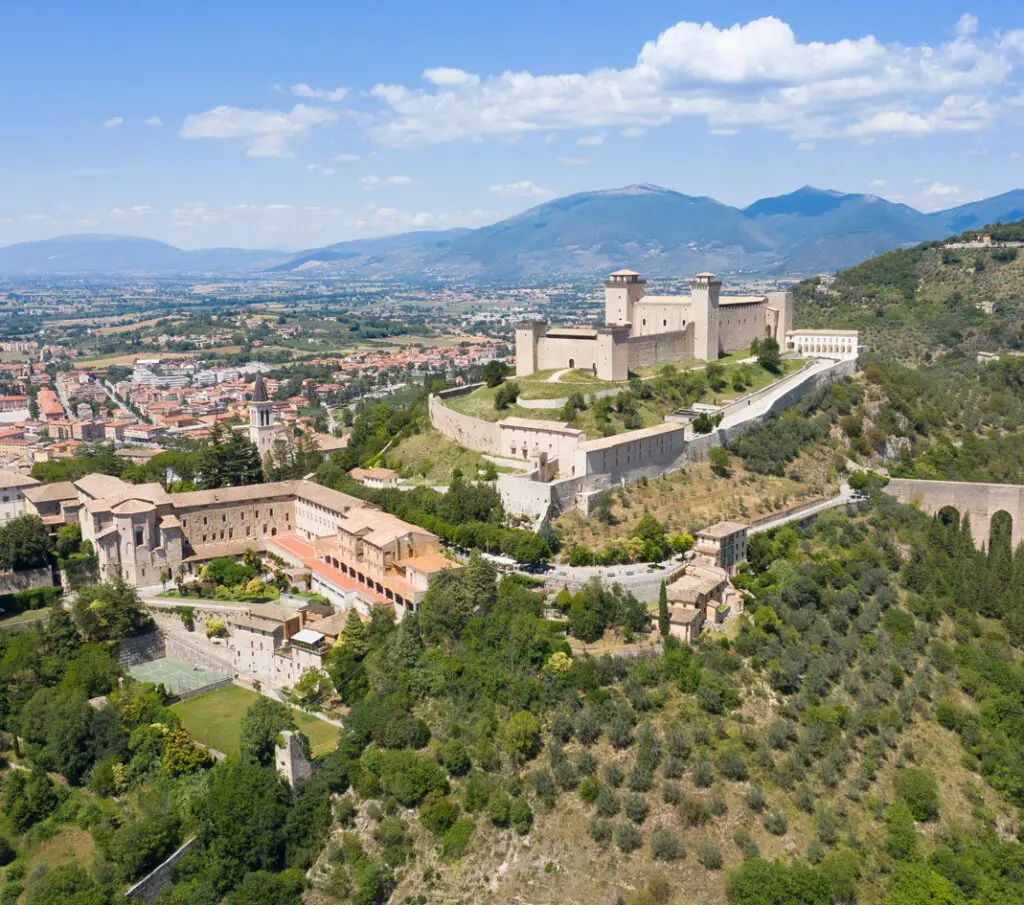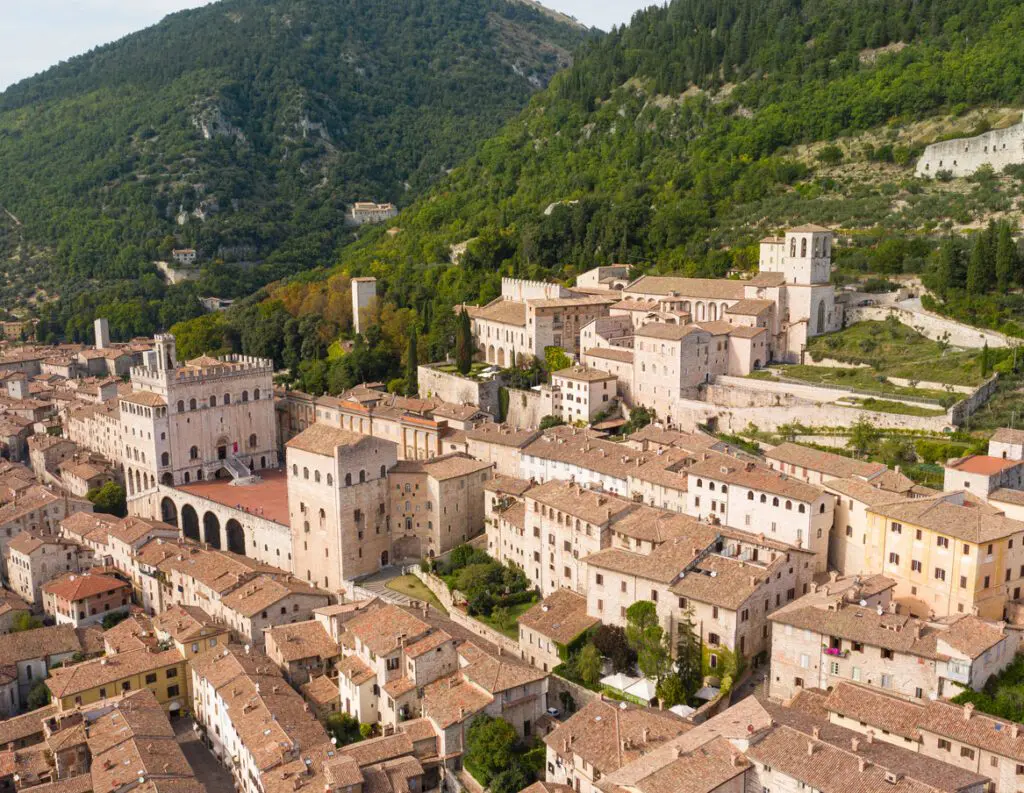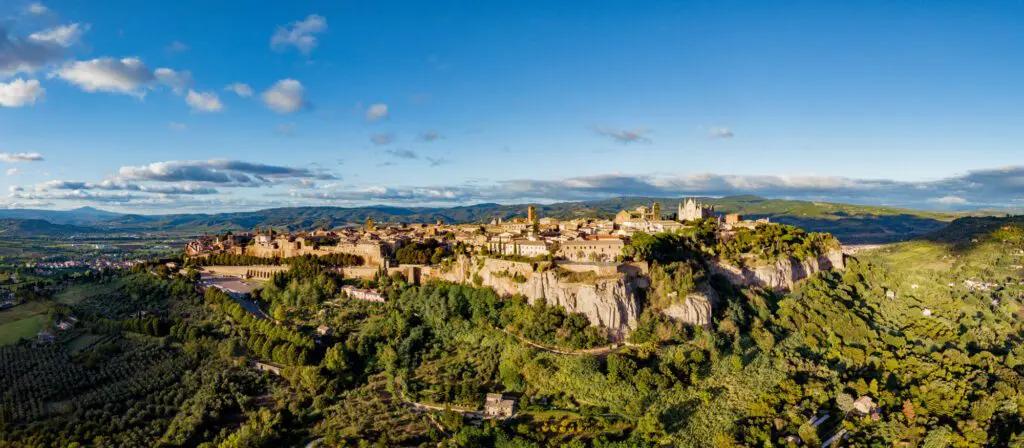Museo del Capitolo (Capitolo Museum) in Perugia is located in the area of Isola San Lorenzo (Saint Lawrence “Island”)and this makes it a place worth discovering together with the many artifacts it houses. For each of these objects, from paintings to manuscripts, it is possible to tell a story.
The rooms of Museo del Capitolo
There are many reasons recommending a visit to the Museo del Capitolo of Perugia. One is the opportunity to come into contact with some fascinating buildings and spaces. The museum rooms tell their own story; in fact, they have been home to the canons, the priests of the Cathedral community since the Middle Ages (when houses were “tower-houses”), they were also Papal residences, and the rooms in which the very first students presented their theses at Perugia University, founded in 1308. This very old story may not be easy to grasp while moving in the current rooms, that have been modified more than once during the centuries; however, by paying a little attention, the different layers will surface and become obvious.
The second reason, the most evident one, is the discovery of a strong connection between places, time and artworks. Many of the objects preserved there symbolize the link with sacred rites, with liturgy, representing shared feelings, icons of salvation, reason for of amazement and emotion.
The works of great artists
The Gonfalone of Benedetto Bonfigli
Among the examples of the deep link between art and people’s culture in Perugia are the gonfaloni (gonfalon), standards to be carried in processions, created in an epoch when the deadly plagues that periodically hit the population were often interpreted as divine punishments. These artifacts were religious paintings to be carried in procession and displayed in public areas. Their creation was commissioned to painters capable of interpreting the widespread feelings, like fear, supplication, trust.
Benedetto Bonfigli(1420 – 1496) painted, during a plague in 1476, the gonfalon for the Church of Saint Fiorenzo, preserved today in the Museo del Capitolo. His painting skillfully expressed the supplication of Perugia’s inhabitants to God; in fact, they are painted in the lower part of the painting, in a devout attitude, surrounded by the saint and blessed members of the religious order to which the church belonged. The painting can be easily understood, however, it hides some details, such as the angel in the top left corner looking towards to those who admire the painting, attracts the observers into the artwork with his eyes, making them also a part of the representation.
Luca Signorelli’s Altarpiece of Saint Onuphrius
Precious artwork in the Museo del Capitolo, the Altarpiece of Saint Onuphrius was painted by Luca Signorelli in 1484. It is named after the Saint hermit painted at the foot of the throne of Virgin Mary and the Infant Jesus. In this painting, like elsewhere, details betray the artist’s great skills. The glass with violets inside in the foreground, or the crystal Crucifix held by Saint John the Baptist, passed through by a sunbeam, reveal that Signorelli studied the light phenomena thoroughly. As soon as the eye runs the risk of getting lost in details, however, it is immediately caught back and led across the painting by the gaze of the saints around Virgin Mary.
The influence of clients on the works
By comparing works of art, it is possible to see the importance of clients. To Bonfigli, who had made paintings in very important and prestigious places, such as the Chapel of Priors in the Perugia Palace of Priors, was requested a gonfalon with a strong emotional impact. Instead, Jacopo Vagnucci, a distinguished character in the Catholic Church imbued with humanistic culture, turned to Luca Signorelli to commission a painting to be placed in an aristocratic setting: his private chapel inside Saint Lawrence’s Cathedral in Perugia.
The Papal chair
Some objects in the museum are unusual, for example, the faldistorium, a folding chair, with no backrest and no armrests. This object comes from the chairs used by Roman generals in the encampments; while, in a Christian context, the faldistorium would be reserved to the “general,” the Pope.
Two elements might help to understand the importance of such an artifact: first, it dates back to the late 13th century, early 14th century; second, it was (and is) in Perugia. In about a century, in fact, between 1216 and 1305, Perugia hosted five Conclaves, so, the Popes were not only elected in Rome (unlike nowadays), but also in other towns.
This Papal chair is made of ebony, a kind of wood that comes from extra-European countries and is a really hard, long-lasting material. Employing this precious wood was, therefore, both a sign of wealth and a “warranty of duration”, that promoted its use in a very prestigious context as the Papal Court was. Each square inch is decorated by either etching or carving and, in the drawings, some curled-up dogs and a little exotic monkey can be seen
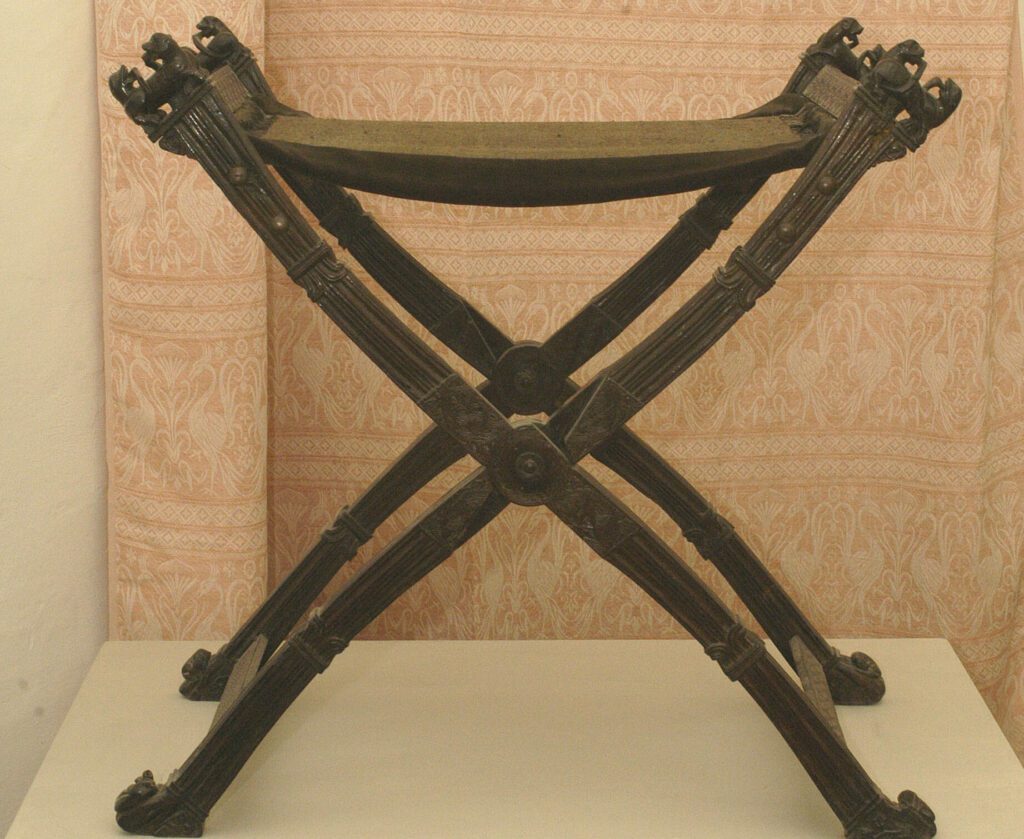
The manuscript from Acri
The passing centuries caught other precious things, for example, the manuscripts that are an extraordinary treasure. More than 40 of them are kept in the Museo del Capitolo, covering the time span between the 6th and the 16th centuries. The vicissitudes of some of these texts still remain a mystery, while we are certain, about others, that they were written expressly for Saint Lawrence’s Cathedral.
We do know where the most famous manuscript in the museum comes from, namely the ancient city of Acre in the Holy Land, though we have no idea about the journey that brought it all the way up to our Cathedral. It is a Missal, a book containing the texts, songs, prayers that Catholic priests proclaim during the Mass. It is written on parchment and includes some miniatures and capital letters. The writing style can be ascribed to an amanuensis with a French cultural background; while the miniatures look like the work of two artists familiar with the Western pictorial tradition, with a strong influence from Venice. This manuscript tells a fascinating story, only apparently far from, that builds a bridge between the two opposite coasts of the Mediterranean Sea, that has always been a hub for cultural exchanges.
